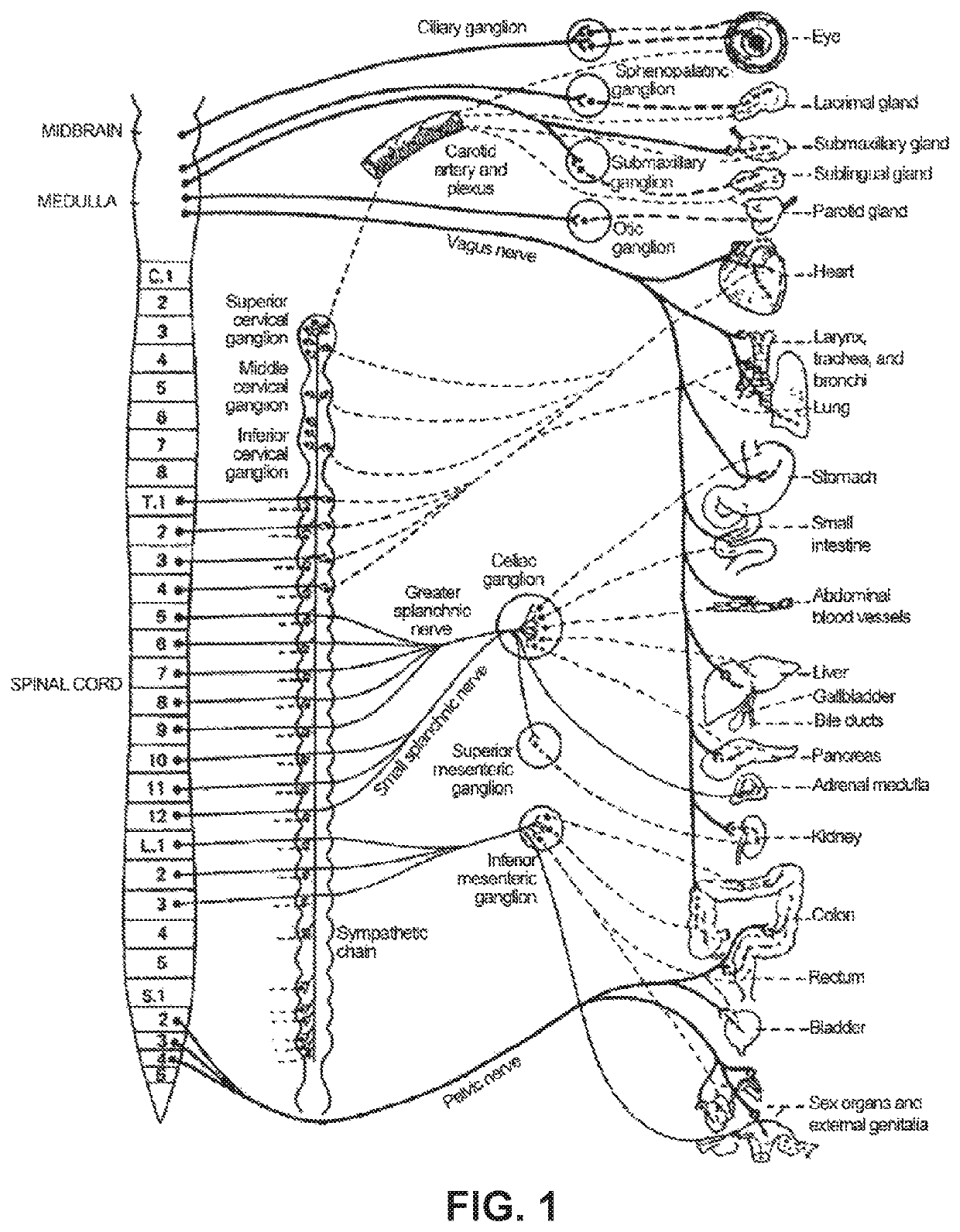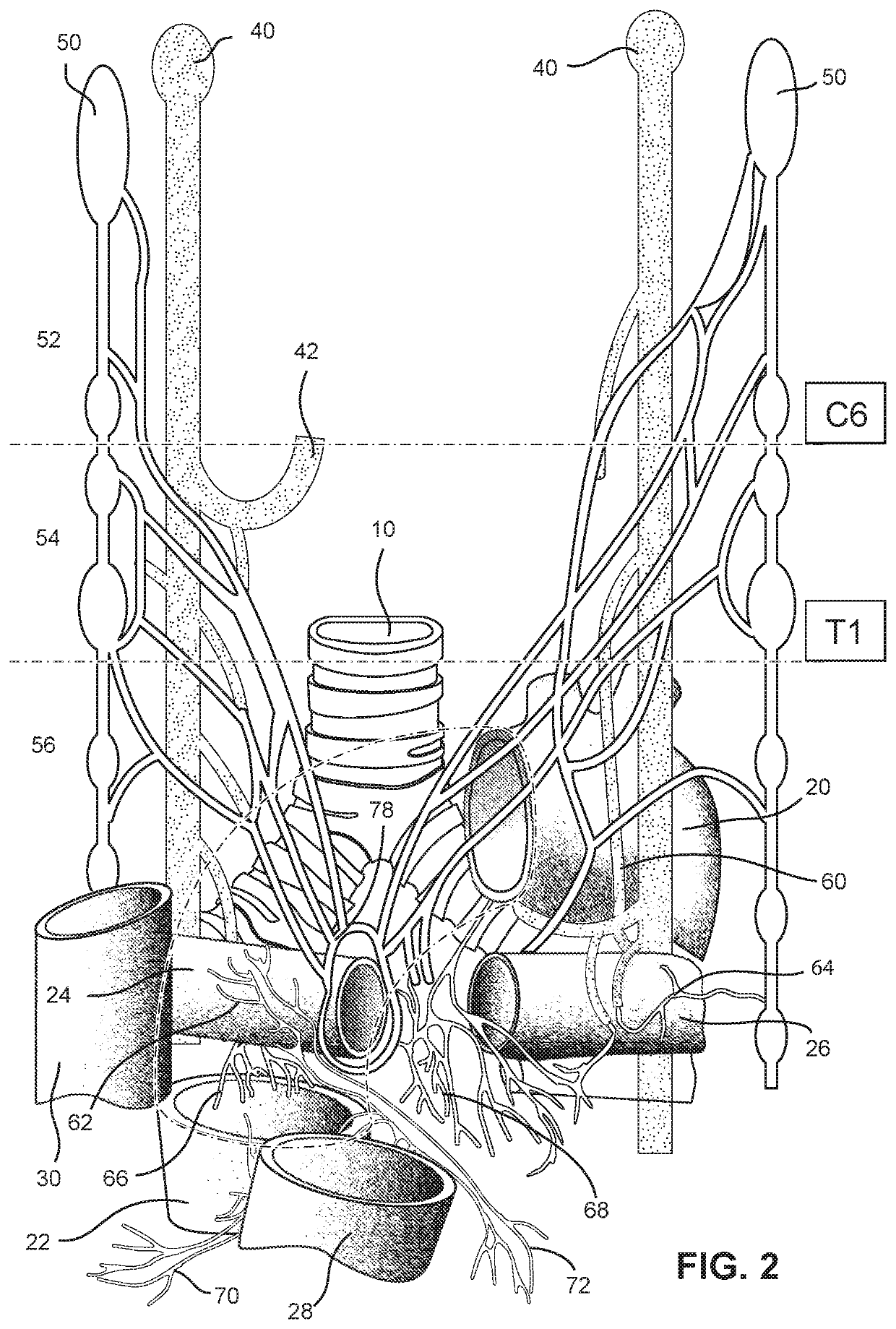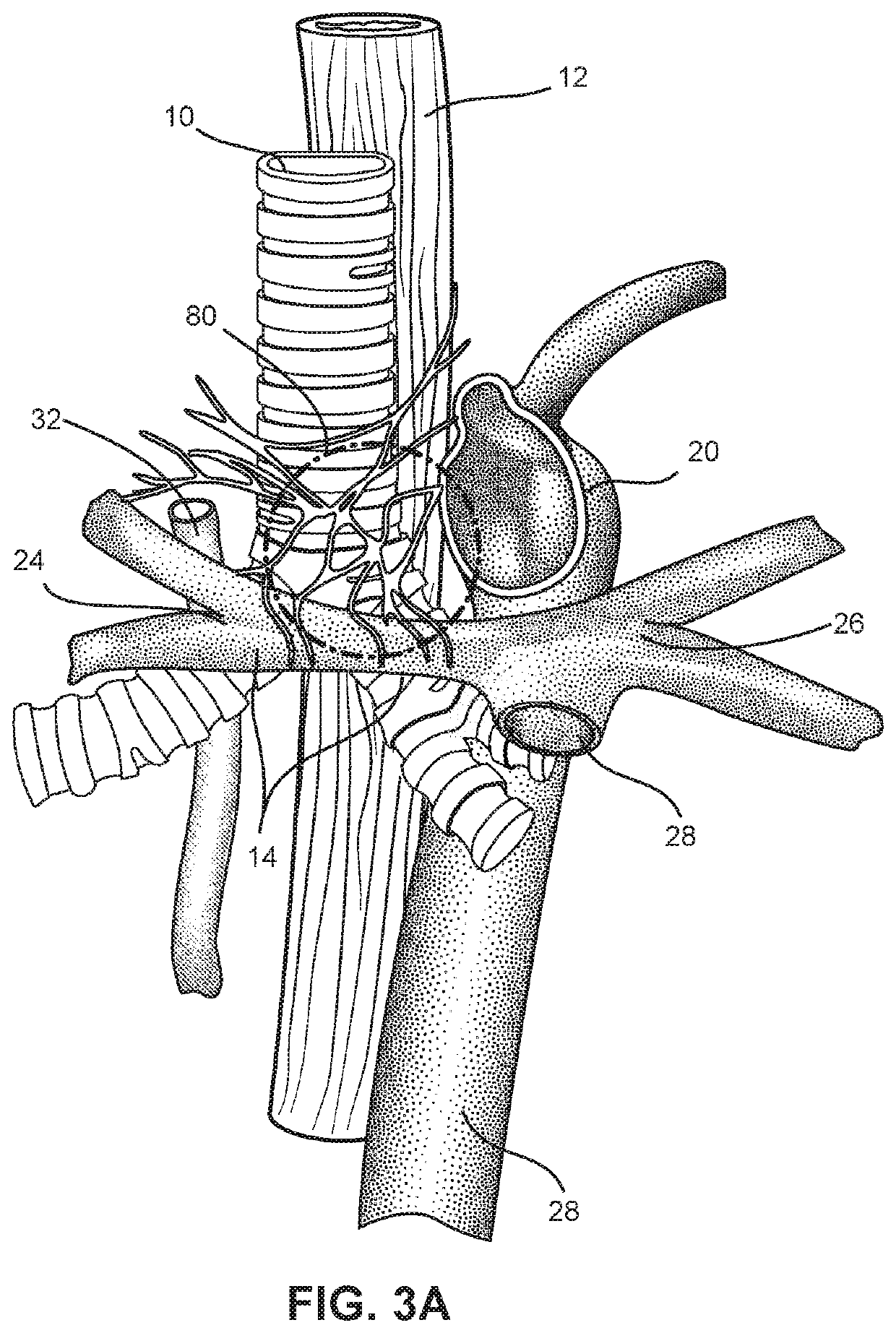Method and apparatus to treat cardiopulmonary disease
a cardiopulmonary disease and apparatus technology, applied in the field of medical devices, can solve the problems of cardiac arrhythmias, increased cardiac excitability, and complicated therapies directed at cardiac efferent nerves that connect the sympathetic chain to the hear
- Summary
- Abstract
- Description
- Claims
- Application Information
AI Technical Summary
Benefits of technology
Problems solved by technology
Method used
Image
Examples
examples
[0093]1. A method of modulating activity of at least one sympathetic nerve, nerve fiber or neuron innervating the deep cardiac plexus to ameliorate pulmonary hypertension the method comprising: advancing an treatment apparatus to a target location close to or in close proximity to the tracheal bifurcation of the patient; and using the treatment apparatus to modulate activity of at least one sympathetic nerve, nerve fiber or neuron innervating the deep cardiac plexus.
[0094]2. A method as in example 1, wherein the advancement of the treatment apparatus comprises advancing an ablation device that emits energy selected from the group consisting of monopolar radiofrequency, bipolar radiofrequency, other forms of radiofrequency, high intensity focused ultrasound, low frequency ultrasound, other forms of ultrasound, microwave, light, heat, cold radiation, phototherapy, magnetic, electrical, electromagnetic, cryotherapy, plasma, mechanical, and chemical, and wherein using the treatment appa...
PUM
 Login to View More
Login to View More Abstract
Description
Claims
Application Information
 Login to View More
Login to View More - R&D
- Intellectual Property
- Life Sciences
- Materials
- Tech Scout
- Unparalleled Data Quality
- Higher Quality Content
- 60% Fewer Hallucinations
Browse by: Latest US Patents, China's latest patents, Technical Efficacy Thesaurus, Application Domain, Technology Topic, Popular Technical Reports.
© 2025 PatSnap. All rights reserved.Legal|Privacy policy|Modern Slavery Act Transparency Statement|Sitemap|About US| Contact US: help@patsnap.com



